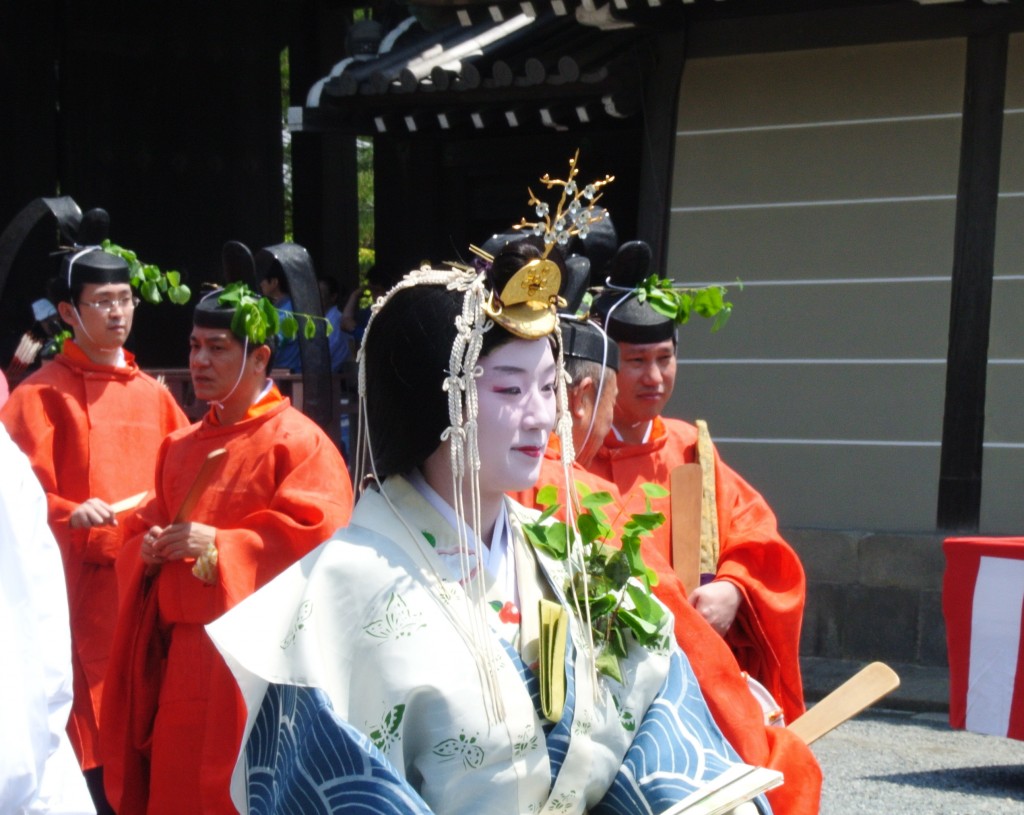
The headdressof a court lady is suggestive of the shamanic miko of early Japanese history. Like others in the procession, she wears the emblematic aoi leaves, once thought to protect against the plague. (Sometimes translated as hollyhock, aoi is in fact closer to wild ginger.)
On May 15 the oldest of Kyoto’s Big Three Festivals takes place. The Aoi Matsuri is the city’s big spring event; the Gion Matsuri is the summer bonanza; and the Jidai Matsuri is the autumnal offering. In winter we take a break to enjoy Oshogatsu (New Year festivities).
The festival originated in the sixth century in a desire to please the kami and prevent disasters. Nowadays there are over 500 participants in Heian era costume; 36 horses; 2 ox-carriages. The procession starts off from the Former Imperial Palace around 10.30, and the stately progress means that it takes an hour to travel the short distance to Shimogamo Shrine.
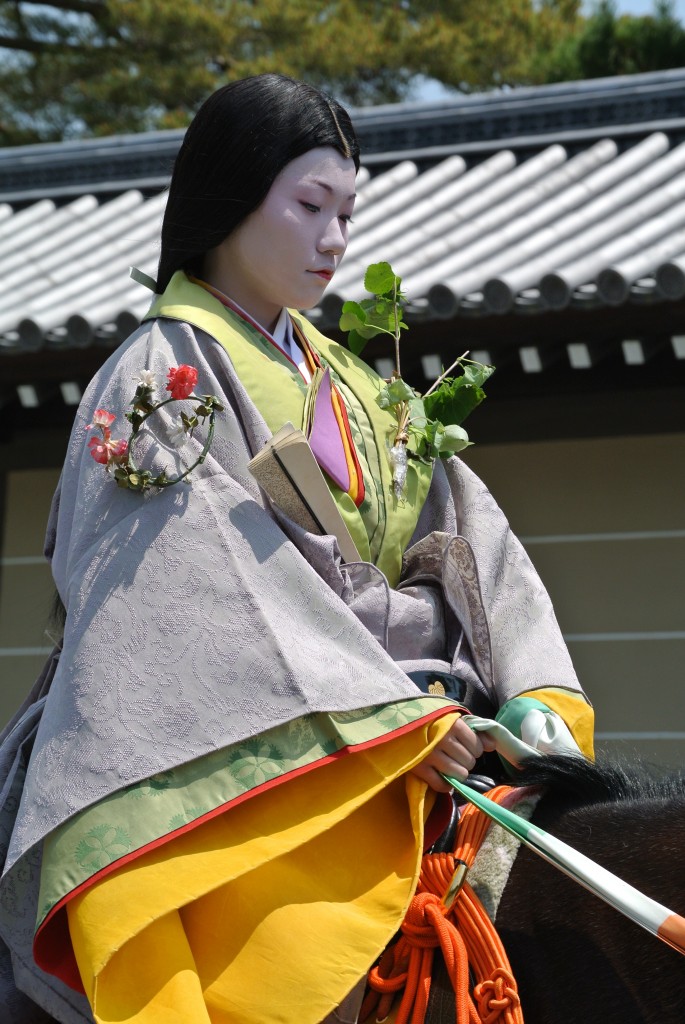
All the gorgeous aesthetics of Heian aristocratic society are on display, here seen on a court lady preparing to set off from in front of the Former Imperial Palace
The procession stretches out to be half a mile long, and consists of horseback warriors, foot warriors, courtiers, lower-rank guards, higher-rank guards, halberd bearers and dignitaries. At Shimogamo dances are performed for the kami and the imperial messenger delivers greetings. Around 2.20 the procession sets off for Kamigamo Jinja where it arrives around 4.30 and rituals are again performed.
In medieval times there were two processions, one for the imperial messenger proceeding from the Imperial Palace and the other for the Saiin (an unmarried female related to the emperor appointed to the shrines). Between 810 and the early thirteenth century, when the practice fell into abeyance, there were 35 such priestesses who lived in palaces somewhere between the two Kamo shrines.
The procession gets ready for departure in the grounds of the Former Imperial Palace. In former times the procession of the Saiin would meet up with that of the imperial messenger, and they would proceed together to the shrines. Nowadays everyone sets off from the south side of Gosho (Former Imperial Palace), and the role of the Saiin is taken by an unmarried young female from a well-bred local family, who is known as the Saio-dai. (For this year’s chosen representative, click here. For an interview with a former representative, click here.)
Unfortunately the weather forecast for tomorrow looks bad, with rain predicted. Depending on the weather conditions, a decision will be made tomorrow morning whether to postpone the parade for a day. After all, those junihitoe (twelve-layered ceremonial kimono) and other exquisite costumes are precious items, not intended by any means to serve as simple rain-gear.
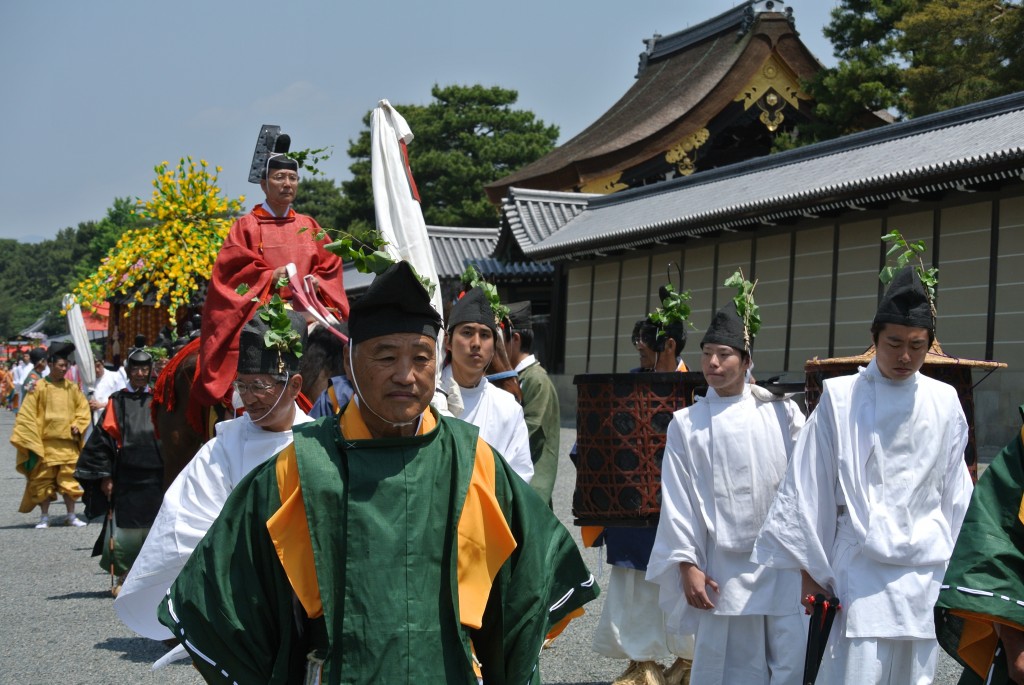
It's 10.30 and they're off. It's going to be a long day, only reaching Kamigamo Jinja around 4.30 in the afternoon.
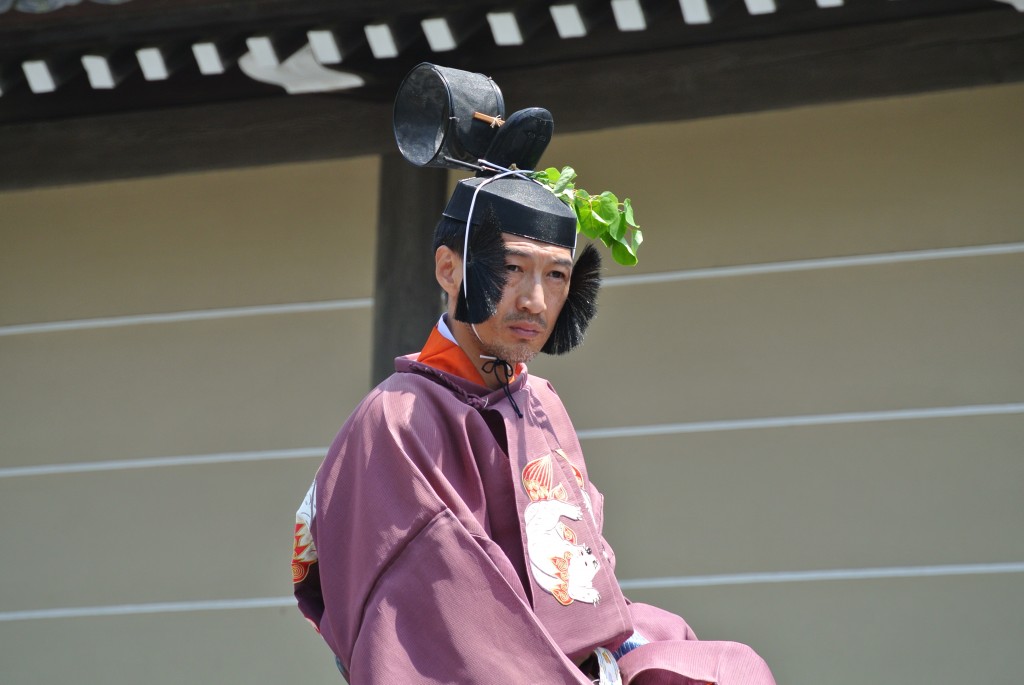
Some of the participants look doggedly determined...
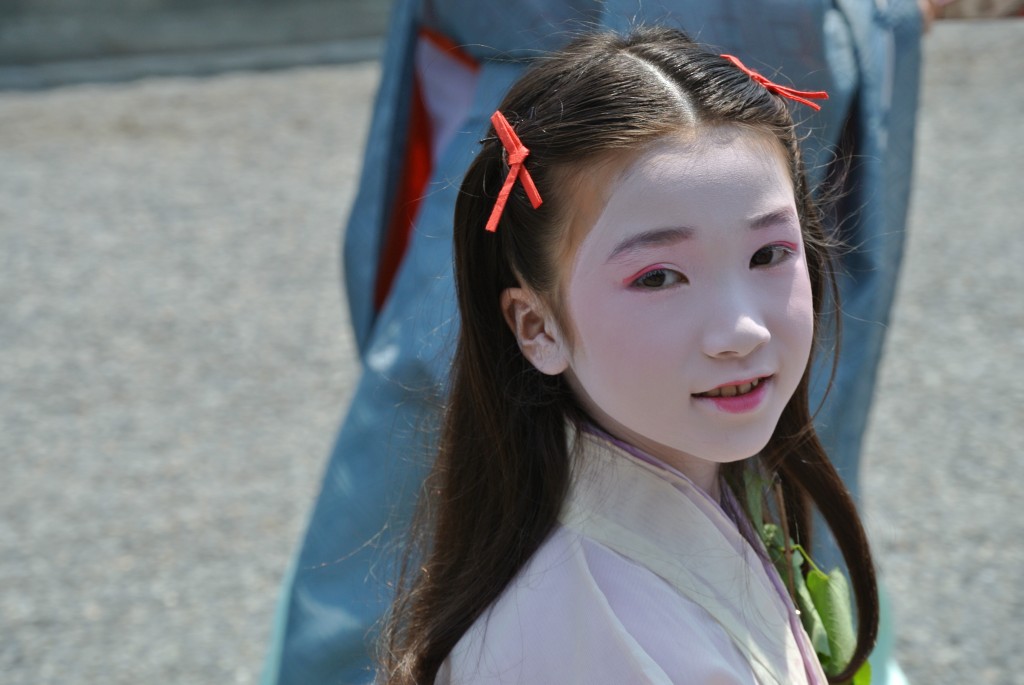
.... others are clearly enjoying the occasion.
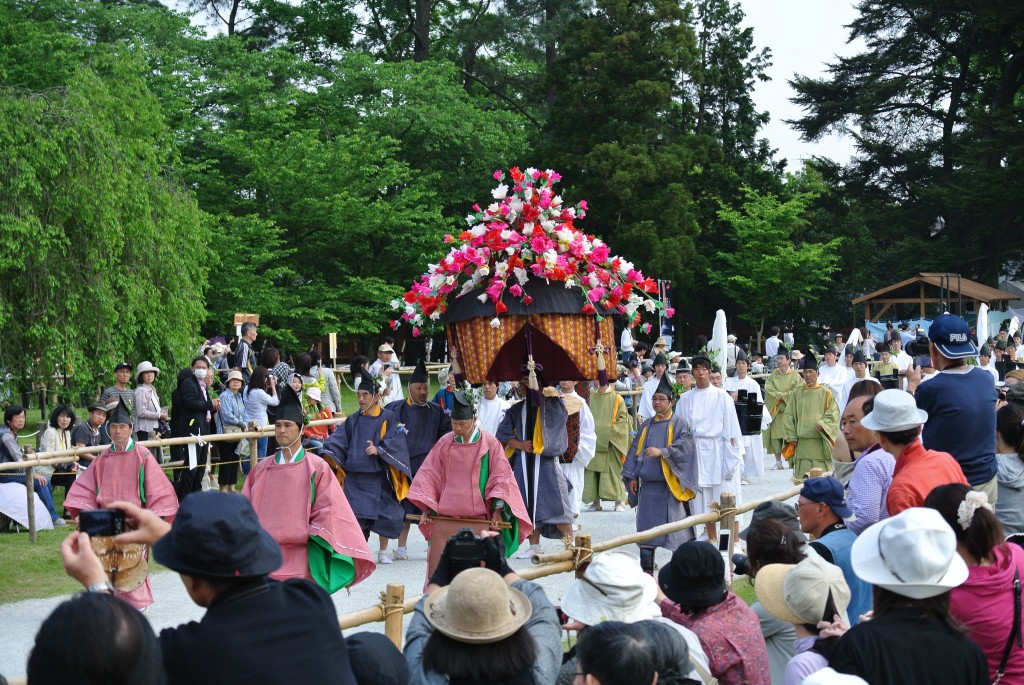
At Kamigamo Shrine there's quite a crowd to see the end of the procession.
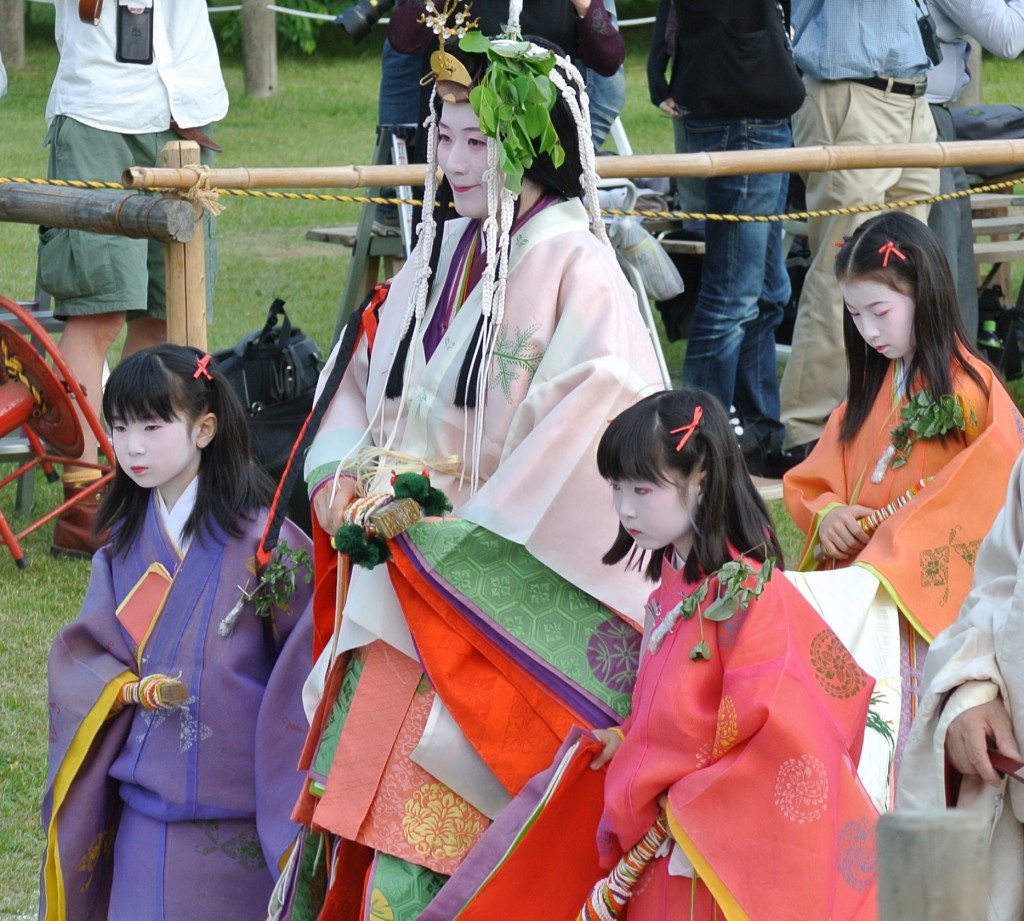
The highlight of the procession is not the imperial messenger but the Saio-dai and her attendants, who attract a frenzied flurry of photographers

Thinking of going today, not sure what the weather will do!